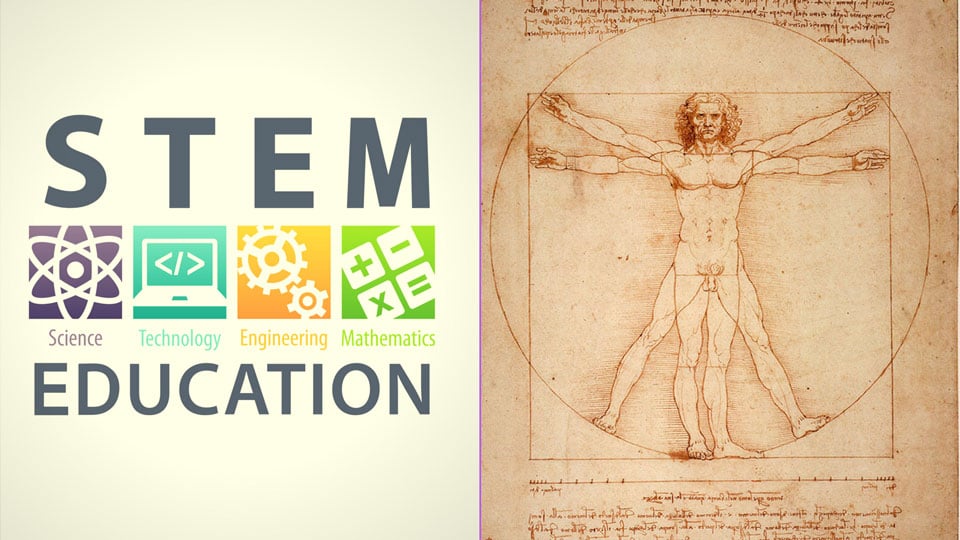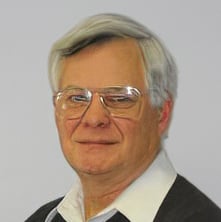This article was written by Bill Lydon, chief editor at InTech magazine. Want to learn more on this topic? Click this link to read past ISA President Stephen Huffman's response to Bill Lydon's post.
Michael J. Gelb, author of the book How to Think like Leonardo da Vinci, gave a thought-provoking keynote presentation at an Emerson Exchange. He posed the notion that STEM (science, technology, engineering, and math) education should be expanded to STEAM (science, technology, engineering, art, and math) education.
Certainly his presentation about Leonardo da Vinci and his artistic works, including The Last Supper and Mona Lisa, was inspiring. Da Vinci’s talents and interests extended far beyond his artistic works; he studied nature, mechanics, anatomy, and physics. He did not see a divide between science and art, with observations and inventions recorded in 13,000 pages of notes and drawings, including designs for flying machines (some 400 years before the Wright brothers’ first success), a bicycle, a helicopter, a submarine, and a military tank; plant studies; war machinery; anatomy; and architecture.

A great example of da Vinci’s engineering was his parachute design. Though credit for the invention of the first practical parachute usually goes to Sebastien Lenormand in 1783, da Vinci actually conceived the parachute idea a few hundred years earlier. Da Vinci made a sketch of the invention with this accompanying description: “If a man have a tent made of linen of which the apertures [openings] have all been stopped up, and it be twelve braccia [about 23 feet] across and twelve in depth, he will be able to throw himself down from any great height without suffering any injury.” The most distinct aspect of da Vinci’s parachute design was that the canopy was triangular rather than rounded, leading many to question whether it would actually have enough air resistance to float. And since da Vinci’s parachute was to be made with linen covering a wood frame, the hefty weight of the device also was viewed as an issue. The invention was never actually built or tested by da Vinci, but in the year 2000 daredevil Adrian Nichols constructed a prototype based on da Vinci’s design and tested it in a 7,000-foot descent. Da Vinci’s design worked, with Nichols noting that it had a smoother ride than the modern parachute.
Several themes could be said to unite da Vinci’s eclectic interests. Most notably, he believed that sight was mankind’s most important sense and that “saper vedere” (knowing how to see) was crucial to living all aspects of life fully. He saw science and art as complementary rather than distinct disciplines, and thought that ideas formulated in one realm should inform the other. At some point in the early 1490s, da Vinci began filling notebooks related to four broad themes—painting, architecture, mechanics, and human anatomy—creating thousands of pages of neatly drawn illustrations and densely penned commentary. The notebooks, often referred to as da Vinci’s manuscripts and “codices,” are housed today in museum collections. The Codex Atlanticus, for instance, includes a plan for a 65-foot mechanical bat, essentially a flying machine based on the physiology of the bat and on the principles of aeronautics and physics. Other notebooks contain da Vinci’s anatomical studies of the human skeleton, muscles, brain, and digestive and reproductive systems.
Gelb suggested seven principles in his book How to Think like Leonardo da Vinci:
- Curiosità – an insatiable quest for knowledge and continuous improvement
- Dimostrazione – learning from experience
- Sensazione – sharpening the senses
- Sfumato – managing ambiguity and change
- Arte/Scienza – whole-brain thinking
- Corporalità – body-mind fitness
- Connessione – systems thinking
Just as da Vinci believed saper vedere can lead to better understanding, automation professionals should consider stepping back and observing a wide range of factors. Rather than immediately diving in to solve problems, we should challenge ourselves to really “see.”
The next time someone sees an automation application and exclaims, “What a thing of beauty!” think of Leonardo da Vinci. Maybe we should expand our thinking to STEAM education in our schools.
 About the Author
About the Author
Bill Lydon is chief editor of InTech magazine. Lydon has been active in manufacturing automation for more than 25 years. He started his career as a designer of computer-based machine tool controls; in other positions, he applied programmable logic controllers and process control technology. In addition to experience at various large companies, he co-founded and was president of a venture-capital-funded industrial automation software company. Lydon believes the success factors in manufacturing are changing, making it imperative to apply automation as a strategic tool to compete.
Connect with Bill:![]()
![]()
![]()
A version of this article also was published at InTech magazine.




